VU LRC Summer School - Topics
The experimental training school will cover these topics:
I. Measurement of few cycle pulse temporal characteristics by dispersion scan technique
Duration: 2 days for one training session
Organizer: dr. Rimantas Budriunas, PhD student
Topic and training goals:
Dispersion scan technique is one of the main methods for accurate characterization of few cycle pulses that relies on measuring the spectrum of a nonlinear signal, such as pulse second harmonic, as a function of dispersion applied to pulse. The aim of this training session is to present participants with the theoretical fundamentals related to complete ultrashort pulse characterization by dispersion scan method and its a variant of the d-scan technique in which the test functions are pure quadratic phases (chirp-scan)1, provide training on assembling of experimental chirp-scan set-ups, software handling and performing of measurements of ultrashort pulse profile, spectrum and phase characteristics. The experiments will be performed using ~10 fs pulses generated by high peak power OPCPA systems and acousto-optic programmable dispersive filter “Dazzler”.
Targeted audience: Master and PhD students, post-doctoral researchers having basic education on ultrashort pulses optics.
Maximum number of participants for one session: 2.
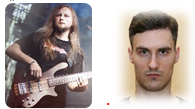 |
Dr. Rimantas Budriūnas and PhD student Gaudenis Jansonas are the members of High-intensity laser physics group at Vilnius University Laser Research Center. They participated in the development of TW-class OPCPA system at Laser Research Center and are experts of few cycle pulse formation using parametric amplification systems and complete characterization of ultrashort pulses. |
Related publications:
- Miranda, C. L. Arnold, T. Fordell, F. Silva, B. Alonso, R. Weigand, A. L’Huillier, and H. Crespo, “Characterization of broadband few-cycle laser pulses with the d-scan technique,” Opt. Express 20, 18732–18743(2012).
- Loriot, G.Gitzinger, N.Forget, Self-referenced characterization of femtosecond laser pulses by chirp scan, Optics express, 21, 24879 (2013).
II. Ultrashort laser pulse characterization techniques
Duration: 1 day for one training session
Organizer: dr. Julius Vengelis
Topic and training goals:
Characterization of ultrashort laser pulse temporal and spectral characteristics is essential when developing laser systems and performing various nonlinear optics experiments. The goal of this one-day course is to get acquainted both theoretically and practically with several most popular ultrashort pulse characterization methods. During this one-day course attendants will construct experimental setup, perform ultrashort pulse characterization measurements using several popular ultrashort pulse temporal characterization techniques: intensity autocorrelation, second harmonic frequency-resolved optical gating (FROG) and cross-correlation frequency-resolved optical gating (XFROG), and will analyze measurement results to retrieve ultrashort pulse characteristics.
Targeted audience: Master, PhD students and post-doctoral researchers with no prior experience in ultrashort pulse characterization techniques.
Maximum number of participants: 2.
 |
Dr. Julius Vengelis is an associate professor / senior researcher at Vilnius University Laser Research Center. His research interests include nonlinear optics, developments of optical parametric devices, investigation of photonics crystal fiber properties, ultrashort pulse characterization. |
Related publications:
1) Swamp Optics Tutorial. FROG. https://www.swampoptics.com/assets/tutorials_frog.pdf
2) Swamp Optics Tutorial. Intensity Autocorrelation In order to measure an event in time, you need a shorter one. So how do you measure the shortest one? https://www.swampoptics.com/assets/tutorials_autocorrelation.pdf
3) S. Linden, H. Giessen, and J. Kuhl, XFROG - A New Method for Amplitude and Phase Characterization of Weak Ultrashort Pulses, Phys. Stat. Sol. (b) 206, 119 (1998) https://onlinelibrary.wiley.com/doi/epdf/10.1002/%28SICI%291521-3951%28199803%29206%3A1%3C119%3A%3AAID-PSSB119%3E3.0.CO%3B2-X
III. Optical damage morphology and threshold measurements
Duration: 1 day for one training session
Organizer: dr. Balys Momgaudis
Topic and training goals:
On one hand, it is often said that when designing high intensity optical systems, a common limiting factor is optical damage. On the other, if everything is done according to the calculations and specifications, we may never encounter this phenomenon. However, sometimes it might be necessary to both understand what is happening and to know what to look for. Therefore, in this tutorial we will focus on what is laser damage, what physics are involved in the formation of this object and what parameters can affect the evolution of the process and the final form of the damage.
You will be introduced to the standard procedures used in optical damage testing according to the international standard. You will be able to test these procedures in a practical exercise, on multiple provided samples commonly encountered in in optical systems, such as metallic and dielectric coatings and substrates. The work will involve adjustment and characterizations of the relevant optical parameters such as pulse duration, wavelength, and beam diameter. Proper alignment of the sample as well as the high intensity laser beam. Calibration of the automatic power control system as well as choosing the proper testing procedure for a given use case. Analysis of damage morphology using both in situ imaging as well as post mortis surface inspection using DIC microscopy. The exercise will finalize with analysis of the collected data, evaluation of the optical damage threshold value and estimation of the accuracy of the measurement.
Targeted audience: Master or PhD students of Physics.
Maximum number of participants: 2.
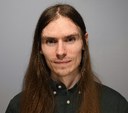 |
Dr. Balys Momgaudis is a recent graduate in laser physics and is starting his career as a full-time researcher and lecturer at VULRC. He is an expert in optical imaging and digital holography, time-resolved pump-probe experiments and nonlinear light and matter interaction, including optical damage and material degradation due to repeated exposure. |
Related publications:
- Linas Smalakys, Balys Momgaudis, Robertas Grigutis, Simonas Kičas, and Andrius Melninkaitis, "Contrasted fatigue behavior of laser-induced damage mechanisms in single layer ZrO2 optical coating," Opt. Express 27, 26088-26101 (2019).
- Laurent Gallais, Benoît Mangote, Myriam Zerrad, Mireille Commandré, Andrius Melninkaitis, Julius Mirauskas, Maksim Jeskevic, and Valdas Sirutkaitis, "Laser-induced damage of hafnia coatings as a function of pulse duration in the femtosecond to nanosecond range," Appl. Opt. 50, C178-C187 (2011).
IV. Laser beam shaping techniques for femtosecond laser pulses
Duration: 1 day for one training session
Organizer: dr. Domas Paipulas, dr. Darius Gailevicius
Topic and training goals:
Complex-shaped laser beams are gaining popularity in the field of ultrafast laser micromachining due to their unique capabilities for material processing. Low diffraction Gaussian-Bessel and Airy beams, as well as doughnut-shaped or rectangular top-hat beams, offer important advantages over conventional Gaussian beams. So, how can one master these beam shaping techniques? This training course aims to provide students with theoretical and practical skills in both classical and advanced beam shaping techniques. The spatial light modulator (SLM) is the most popular device used in beam shaping techniques. Students will gain a working knowledge of this tool and learn how to integrate it into the optical path, select the required holographic masks, and characterize the resulting beam. Additionally, the course will demonstrate other important applications, such as aberration control and arbitrary hologram generation. For high-power femtosecond laser applications, the SLM may not be the best choice. Instead, students will use axicons to construct high-intensity Gaussian-Bessel beams and learn how to properly characterize them. Lastly, students will become familiar with the unique CANUNDA beam-shaper unit from Cailabs, which can produce high-intensity, high-quality rectangular top-hat beams.
Targeted audience: Master or PhD students of Physics.
Maximum number of participants: 2.
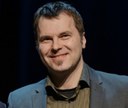 |
Dr. Domas Paipulas is a highly experienced researcher in the field of femtosecond micromachining. He has been working on this topic since 2007 and took active part in developing of different laser micromachining applications, including the ones that require beam shaping techniques. |
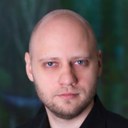 |
Dr. Darius Gailevičius is a young scientist who specializes in fabrication of photonic crystals in all kinds of transparent materials using femtosecond micromachining techniques and is an expert in beam shaping techniques. |
Related publications:
- M. Mikutis, T. Kudrius, G. Šlekys, D. Paipulas, S. Juodkazis, High 90% efficiency Bragg gratings formed in fused silica by femtosecond Gauss-Bessel laser beams, Opt. Mat. Express, 3(11), 1862-1871 (2013). https://doi.org/10.1364/OME.3.001862
- G. Kontenis, D. Gailevičius, L. Jonušauskas, and V. Purlys, Dynamic aberration correction via spatial light modulator (SLM) for femtosecond direct laser writing: towards spherical voxels, Opt. Express 28 (19),27850-27864 (2020). https://doi.org/10.1364/OE.397006
V. Femtosecond supercontinuum generation in bulk solid-state materials
Duration: 1 day for one training session
Organizer: dr. Vytautas Jukna; dr. Gintaras Tamosauskas
Topic and training goals:
The nonlinear interaction of ultrashort laser pulse with the matter is fascinating with its complexity, but relative ease to perform. Students will be introduced to nonlinear Kerr effect leading to self-focusing, pulse splitting, self-steepening and finally supercontinuum generation. Experiments will consist of focusing the femtosecond pulse into solids and recording the generated spectra. It will be shown, that when the pulse power is high enough, the spectral broadening of the ultrashort laser pulse becomes visible to the naked eye, appearing as a rainbow of colours. The conical emission will be shown as a consequence of the supercontinuum generation. However, the experimental emphasis will be devoted to the axial part of the spectrum, which is fully coherent and is exploited for practical applications, such as seeding the optical parametric. The spectral broadening in several nonlinear materials (widely used and more specific) possessing different linear and nonlinear optical properties will be studied in detail. Finally, students will have the possibility to examine the optical degradation of the material and quenching of the supercontinuum light when a high laser pulse repetition rate is used. In this experiment, MatLab will be used for data analysis and combining spectra.
Targeted audience: Master or PhD students of Physics.
Maximum number of participants: 2.
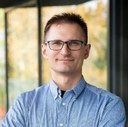 |
Dr. Vytautas Jukna is the member of the Ultrafast nonlinear optics group at Vilnius University Laser Research Center. He is an expert in theory and numerical simulation of ultrafast light-matter interactions. He developed an original computer code that enables numerically simulate the propagation of intense ultrashort laser pulses in transparent materials and related phenomena, such as femtosecond filamentation and supercontinuum generation. |
||
 |
Dr. Gintaras Tamošauskas is the member of the Ultrafast nonlinear optics group at Vilnius University Laser Research Center. He is an expert in ultrafast optical parametric amplification and femtosecond filamentation, with particular skills in ultrashort pulse measurement and characterization, automated data acquisition and complex measurement techniques. |
||
Related publications:
- Marčiulionytė, K. Reggui, G. Tamošauskas, and A. Dubietis, KGW and YVO4: two excellent nonlinear materials for high repetition rate infrared supercontinuum generation, Opt. Express 31, 20377 (2023) https://doi.org/10.1364/OE.489474
- Dubietis and A. Couairon, Ultrafast supercontinuum generation in transparent solid state media, Springer Nature, Cham, Switzerland, ISBN 978-3-030-14994-9, 125 p., 2019 https://link.springer.com/book/10.1007/978-3-030-14995-6

